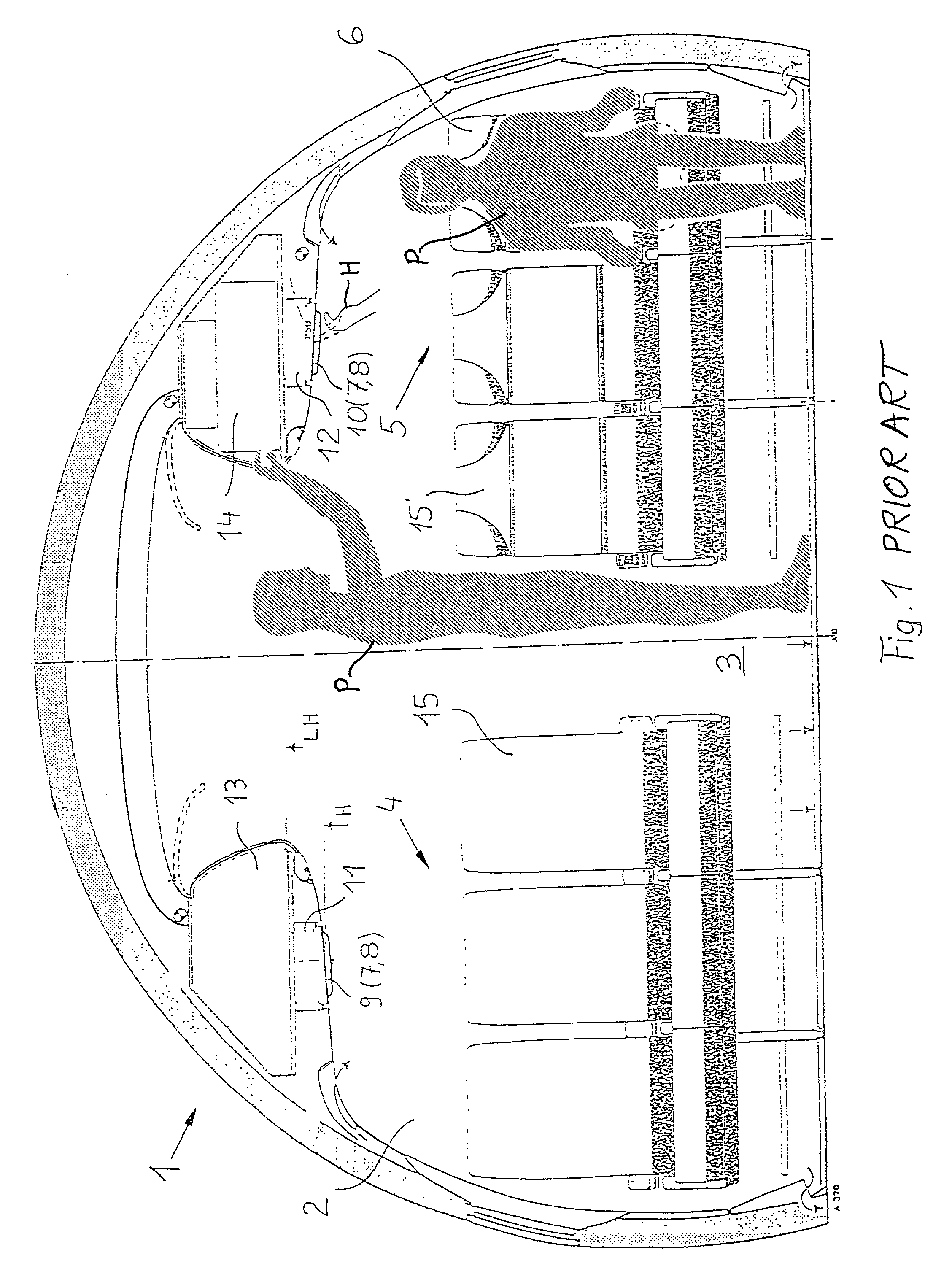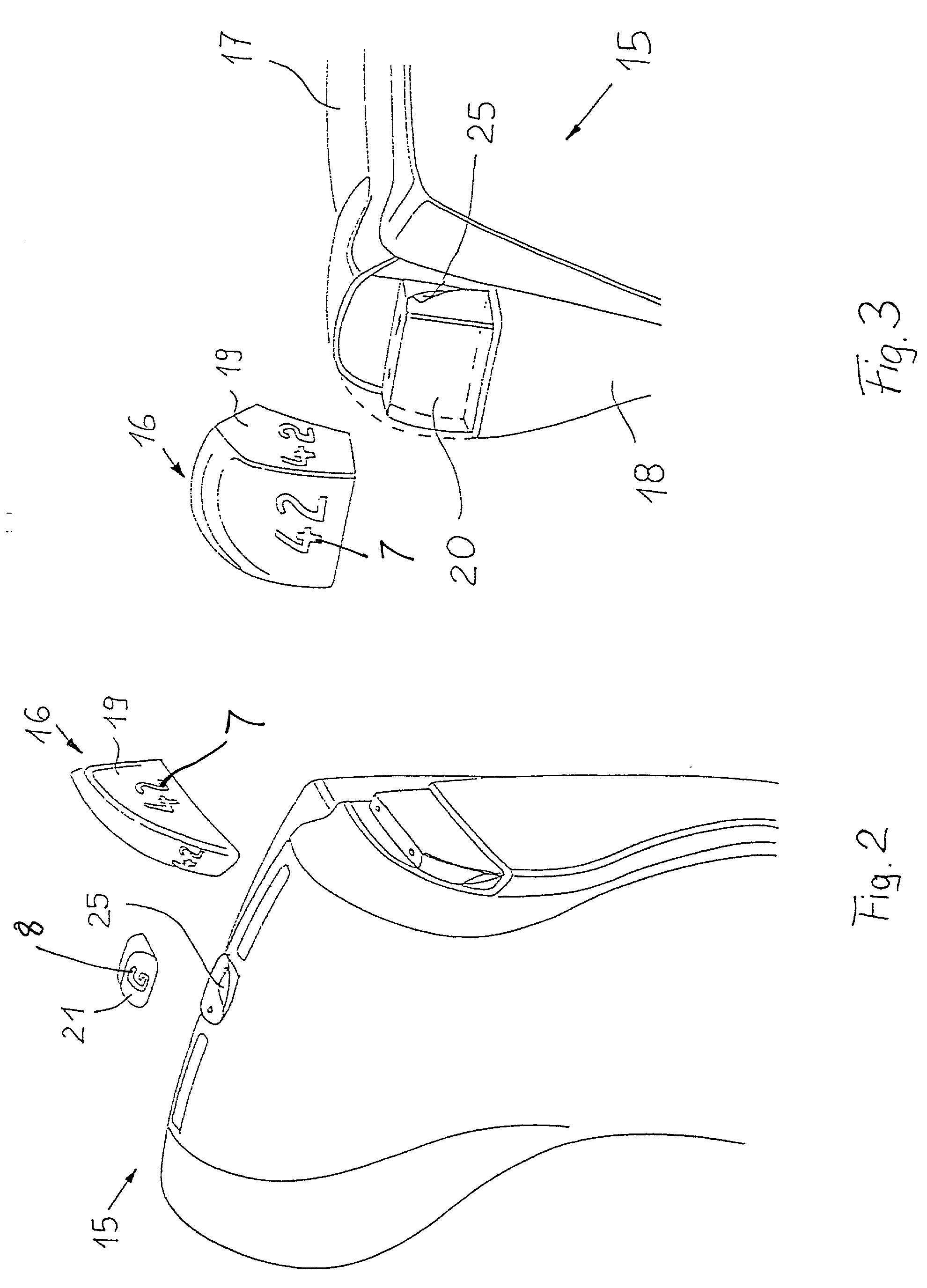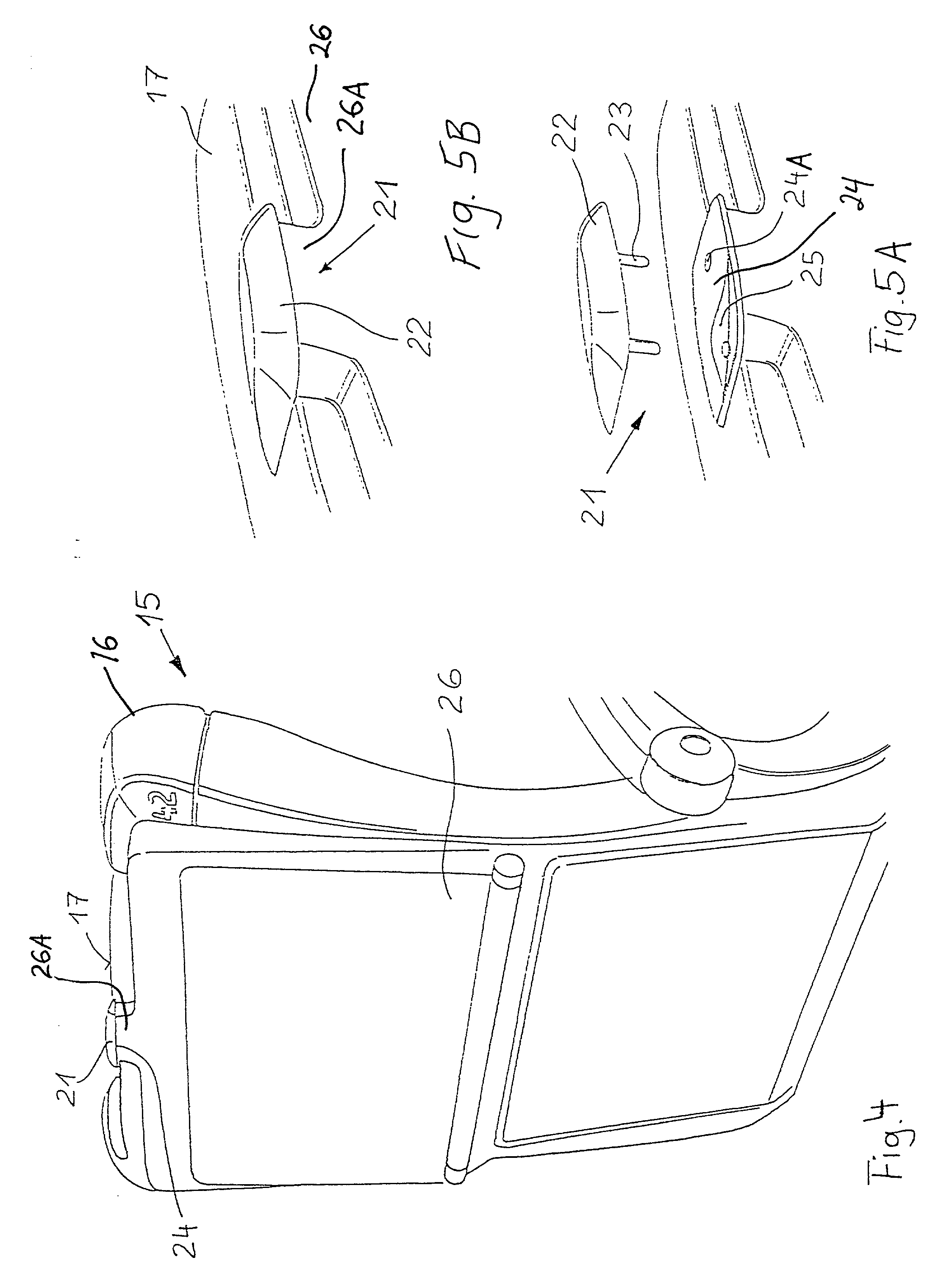Passenger orientation arrangement in a passenger cabin
a technology for passenger seats and orientation arrangements, which is applied in the direction of seating arrangements, identification means, instruments, etc., can solve the problems of difficult or impossible for a person to locate row number and seat position indicator elements, the conventional arrangement of indicator elements is not readily attracted by the passenger's attention, and the limited height of the passenger service unit channel
- Summary
- Abstract
- Description
- Claims
- Application Information
AI Technical Summary
Problems solved by technology
Method used
Image
Examples
Embodiment Construction
[0019] FIG. 1 schematically shows a cross-section through an aircraft fuselage 1 of an aircraft of the Airbus A320 type, with a passenger cabin 2 configured and equipped for passenger transport. Representative typical passengers P are shown standing and sitting in the passenger cabin 2. The passenger cabin 2 is equipped with seat groups 4 and 5 arranged successively one after another along opposite sides of a central aisle 3 that runs along the aircraft longitudinal direction. The seat groups 4 and 5 respectively on opposite sides of the aisle 3 together form a respective seat row 6. A number of such seat rows 6, i.e. a number of the seat groups 4 and 5, are arranged successively one after another in the aircraft longitudinal direction.
[0020] For the purpose of providing individual seat assignments for the individual passengers, each seat row 6 is typically identified by a seat row identifier 7 and particularly a row number, and each individual seat is additionally identified by a s...
PUM
 Login to View More
Login to View More Abstract
Description
Claims
Application Information
 Login to View More
Login to View More - R&D
- Intellectual Property
- Life Sciences
- Materials
- Tech Scout
- Unparalleled Data Quality
- Higher Quality Content
- 60% Fewer Hallucinations
Browse by: Latest US Patents, China's latest patents, Technical Efficacy Thesaurus, Application Domain, Technology Topic, Popular Technical Reports.
© 2025 PatSnap. All rights reserved.Legal|Privacy policy|Modern Slavery Act Transparency Statement|Sitemap|About US| Contact US: help@patsnap.com



